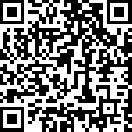What is Tuina massage?

Hailing from ancient China, Tuina, pronounced as “tween-uh,” stands as the oldest known massage tradition. Rooted in traditional Chinese medicine, it revolves around the essential concept of harmonizing the flow of qi energy, or the vital life force.
Practitioners of Tuina employ a blend of massage techniques and manipulations to achieve therapeutic outcomes. The primary objective of this massage is to restore equilibrium to one’s qi flow, believed by proponents to trigger natural self-healing mechanisms within the body.
The Techniques

Tuina practitioners employ a combination of manual methods involving their hands and arms to knead, press, roll, shake, stretch, and realign the recipient’s muscles, bones, ligaments, and tendons. In a manner reminiscent of acupuncture, pressure points on the recipient’s body are stimulated, aiming to influence qi flow along the body’s energy pathways, known as meridians.
Tuina massages may also incorporate the application of herbal poultices, compresses, and salves externally to enhance therapeutic benefits.
Different practitioners may emphasize specific aspects of the technique, such as:
- The rolling method: Concentrating on soft tissue techniques for addressing joint injuries and muscle sprains.
- The one-finger pushing method: Utilizing acupressure techniques to target internal ailments.
- The Nei Gung method: Combining energy-generating exercises with tailored massage techniques to rejuvenate depleted energy systems.
- The bone setting methods: Focusing on manipulation techniques to realign the musculoskeletal system, potentially beneficial for individuals with joint injuries and nerve pain.
Tuina’s Benefits

While some individuals turn to Tuina massage for pain management or illness treatment, others use it for general health and well-being maintenance. Recipients often report relaxation, increased energy levels, and relief from insomnia, headaches, and stress. Anecdotal evidence suggests its primary advantage lies in promoting relaxation and restoring a sense of overall balance. In some cases, it may also alleviate pain, making it a valuable option for those seeking alternatives to pain medications.
Exploring Different Types of Massages

Massage therapy encompasses a wide array of techniques, each serving distinct purposes. Some focus on addressing muscle-related issues and injuries, such as sports and deep tissue massages, while others prioritize relaxation, as seen in reflexology.
Hot Stone Massage

Hot stone massage incorporates heated basalt stones, renowned for their heat-retaining properties. These stones are warmed in hot water before being strategically placed on the body or utilized during the massage. The heat helps relax muscles, improves blood circulation, and can alleviate stiffness and discomfort, making it effective for treating muscle injuries.
Deep Tissue Massage

Deep tissue massage targets deeper layers of muscle and connective tissue. Therapists apply firm pressure and slow, deliberate strokes to reach these tissues. The goal is to address muscle knots or myofascial trigger points, which can result from muscle overuse or poor posture. Deep tissue massage is known for its effectiveness in relieving soreness and providing pain relief.
Swedish Massage

In summary, numerous massage techniques offer relaxation, pain relief, and injury prevention and treatment. These modalities are generally safe when performed by trained therapists.
In contrast, Swedish massage employs lighter pressure compared to other modalities. It combines gentle tapping and longer, flowing strokes with limb movements. Swedish massage is renowned for its stress relief, pain alleviation, and muscle problem management. A 2017 review found it particularly effective in reducing lower back pain, although its suitability varies among individuals.


